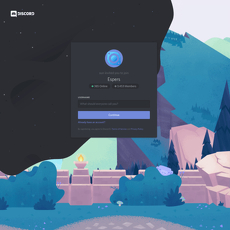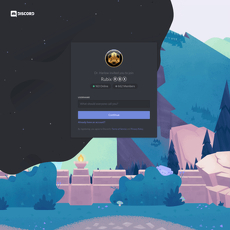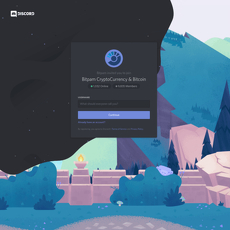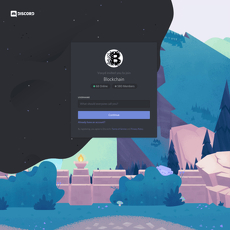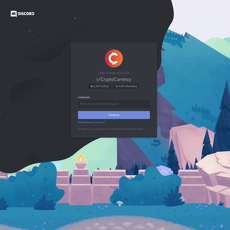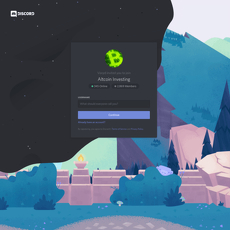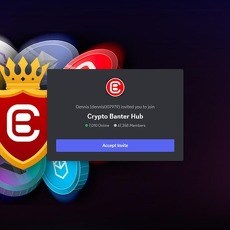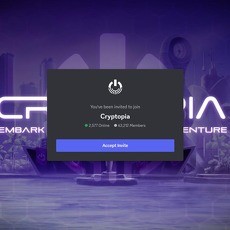Jacob’s Crypto Clan Review
Jacob’s Crypto Clan
discordapp.com
Jacob’s Crypto Clan (JCB) Discord Review Guide: Everything You Need to Know + FAQ
Ever joined a crypto Discord for “alpha,” only to end up with 50 pings, missed entries, and a creeping sense that you’re just chasing candles? You’re not alone. If you’re eyeing Jacob’s Crypto Clan (JCB) and wondering whether it’s actually helpful, you’re exactly who I wrote this for.
The real problems crypto Discord users face
Most crypto servers promise clarity and profits; most deliver noise. Here’s what I see over and over:
- Too many rooms, not enough signal. You get a “BTC long soon” in one channel, a “macro risk off” in another, and three meme coin pings in between. Decision quality tanks when you’re context switching all day. Research from UC Irvine on interruption cost shows it can take ~23 minutes to regain focus after a ping—bad news for timing trades.
- Hype over substance. Screenshots of wins, no discussion of what invalidated the idea. Without the “why,” you can’t repeat a win. You end up overconfident and underprepared—classic behavioral finance traps like FOMO and recency bias.
- Paid shills and weak “calls.” Influencer bags, stealth promos, or presales without audits/vesting details. If you don’t see disclosures and risk notes, assume you’re exit liquidity.
- Confusing onboarding. New members get blasted with every alert. No role-based filters means your notifications become a fire hose and you miss the only two alerts you actually needed.
- Zero risk management. “Win rate 85%” with no invalidation, no R-multiples, and no post-trade review. If you never see stop losses discussed, you’re not looking at a trading group—you’re looking at a highlight reel.
- After-the-fact edits and no receipts. Calls posted after price already moved, or quietly tweaked messages. If there’s no timestamped tracking, it didn’t happen.
Bottom line: most people aren’t losing because they lack signals—they’re losing because they lack structure, risk rules, and a clean way to separate signal from noise.
What I’ll solve for you in this review
I’m going to cut through the fluff and show you:
- How JCB is set up so you know exactly where to spend your time (and what to mute).
- The quality of its signals and education—not just “we called it,” but whether you get entries, invalidations, and reasoning.
- How transparent the team is about performance and mistakes.
- What the community feels like day to day—supportive, chaotic, or somewhere in between.
- How it compares to other big crypto Discords so you can make a quick, confident call.
Quick note on how I test Discords
Here’s the checklist I use to separate helpful from harmful:
- Clear entries, exits, and invalidations. A good alert looks like: “Long ETH 1,865, SL 1,838, TP1 1,895, TP2 1,920. Rationale: reclaim of 4H level + funding reset.” A bad one: “ETH looks bullish.”
- Timestamped trade tracking. Public, uneditable logs or third-party tracking. Screenshots alone don’t count.
- Real moderator support. Fast takedowns of scammers, pinned safety tips, and humans who actually answer questions.
- Beginner resources. Short explainers, not dense textbooks. Pinned posts with risk rules and how to set alerts properly.
- Spam control and role filters. I should be able to subscribe to “signals” and “market updates,” mute everything else, and keep my phone quiet.
- Build-your-own-edge focus. Good servers teach you to think. If it’s just “alpha drops,” you’ll always be waiting for the next ping.
Who this guide is for
- Traders who want signals plus reasoning. You want the setup and the “why,” so you can manage it without hand-holding.
- Beginners who need structure without overwhelm. You’re fine starting small if the room gives you clear rules and clean alerts.
- Busy people who value clarity. You don’t have time to monitor 20 channels. You need high-signal notifications and simple risk rules.
If that sounds like you, stick with me. Next up, I’ll show you what Jacob’s Crypto Clan actually is, who runs it, and what you get in free vs VIP—so you can decide fast without the guesswork. Ready to see if it fits your style?
What is Jacob’s Crypto Clan (JCB) and who runs it?
Jacob’s Crypto Clan (JCB) is a trading and education Discord built around Jacob Crypto Bury’s content and style: straight-to-the-point setups, market context, and a steady stream of presale chatter. Inside, I see a mix of momentum-focused trade ideas, practical explainers, and community discussions that try to keep people focused on risk and timing rather than hype.
Think of it as a trader-first hub with enough teaching moments to sharpen your own edge. On a typical day you’ll see BTC/ETH bias notes, alt setups with why they might work, and early pings on trending presales. It’s not a meme echo chamber—it’s built for people who want to act with a plan.
“Clarity beats hype. Give me entries, exits, and reasons—not fireworks.”
I’m not here for sugar highs; I’m here for repeatable process. That’s the lens I use when I step into JCB.
Free vs VIP: what you actually get
The free tier is a solid way to sample the culture. You’ll usually get market notes, community chat, some chart snapshots, and the occasional open alert. VIP is where the structure typically kicks in—clean signals, faster heads-up on presales/IDOs, a private room with focused discussion, and more frequent updates.
- Free: market coverage, news snippets, open discussions, and limited alerts for a “taste test” of their style.
- VIP: structured entries/targets/invalidations, earlier pings on presales, private chat channels, and tighter feedback loops.
Pricing and perks change—always confirm inside the server before upgrading. If you’re weighing value, think in practical terms: does one or two clean, risk-defined trades reasonably cover a month of VIP for you? If you’re unsure, stay free, watch the flow, and note whether the alerts fit your schedule and risk tolerance.
What a typical VIP-style alert should look like (example format):
- Pair: BTC/USDT
- Bias: Long on reclaim
- Entry: Break and retest above 63,000
- Invalidation: Closing back below 62,400
- Targets: 63,800 / 64,600 / 65,500
- Notes: Momentum + narrative alignment (news/flow), watch volatility on session open
I want timestamps, follow-ups if price moves, and no after-the-fact edits. If you don’t see those habits, keep your wallet closed.
Onboarding and setup to keep it sane
First impressions in any crypto server can be noisy. JCB typically uses verification and role selection to filter content, which is exactly what you want. If you set it up right, your phone stops screaming and your decision quality jumps—consistent with what cognitive load research has shown for years: less noise, better thinking.
My quick-start routine:
- Verify and read the rules. Five minutes here saves hours later.
- Pick roles that match your focus (signals, market updates, presales). Skip the rest.
- Mute non-essential channels. Your attention is your edge. Guard it.
- Turn on notifications only for the channels you’ll act on—usually signals and key market alerts.
- Pin the risk rules or checklists you’ll actually use (e.g., position sizing, stop placement).
Want to go a step further? Create a personal checklist in Notes you glance at before any trade: “Entry rule met? Invalidation clear? Position size set? Volatility high/low? News risk?” You’d be surprised how many avoidable losses vanish with a 10-second checklist.
Who it fits best
- Short-term traders who want clear setups with invalidations and measured targets.
- Learners who appreciate quick technical explanations and examples that don’t overwhelm.
- Presale hunters who want early pings and basic scam filters (KYC/audits, vesting, liquidity locks).
- Busy professionals who prefer clean alerts over constant chatter.
- Narrative-driven traders who like setups aligned with catalysts and sentiment shifts.
If you’ve ever felt that “ping paralysis” at 3 a.m., this kind of role-based structure and focus is a breath of fresh air. It’s not magic—just systems. And systems beat adrenaline every day of the week.
Curious which channels inside actually move the needle (and which to mute without guilt)? I’ll map the exact features next so you can aim your time where it pays. Ready to get a pinpointed channel-by-channel game plan?
Features and channel breakdown: what you’ll find inside
I’ve spent enough hours inside crypto Discords to know that the layout either saves your time or steals it. Here’s how the rooms inside Jacob’s Crypto Clan (JCB) usually map out—and how to use each one without getting buried in pings.
“Clarity beats intensity. The right two alerts can outperform twenty loud ones.”
Signals and trade setups
This is the money room—if it’s done right. I look for entries, invalidations, targets, and a sentence or two on why the setup makes sense. When a server adds a quick post-trade review, it becomes a learning loop instead of a lottery.
- What a quality post looks like:
- Pair: BTC/USDT
- Type: Long
- Entry: 27,850–27,920 (ladder)
- Invalidation: 27,420 (close below 1h structure)
- Targets: 28,300 / 28,950 / 29,400
- Risk: 0.5% per attempt
- Why: reclaim of daily VWAP + funding resetting; confluence with weekly pivot
- Time stamp + follow-up: edits only for updates, never to erase losses
- What I avoid: screenshots of chart porn with no stop, “sending it” language, and targets that magically expand after the move.
- Why this matters: Research in the Journal of Finance (Barber & Odean) shows that impulsive, high-frequency decision-making kills returns. Clear invalidations reduce that impulse and keep you from overtrading.
If you see a PnL log or a closed-trades channel with time stamps and the occasional red result, that’s a green flag. Real traders take losses; real rooms record them.
Market updates and news
These rooms should shape your bias, not force you into chasing every candle. The best ones filter macro and crypto-specific catalysts into “what it means for your next trade.”
- Useful posts often include:
- BTC/ETH trend snapshot: “4h structure intact; wait for reclaim above X”
- Macro nudge: CPI/FOMC schedules, DXY and rates context
- Event catalysts: ETF flows, unlocks, exchange maintenance, protocol upgrades
- Tip: Pair this with your own calendar (e.g., CoinMarketCal) and mute chatter channels. Bias + timing > noise.
- Why this works: Traders who plan around known events tend to avoid “headline-chasing,” a common pitfall in volatile markets documented across multiple behavioral studies.
Presales, launchpads, and early-stage plays
High risk, high variance. This room is useful if it explains the “why” and the “how” behind each opportunity—not just links and hype. I look for a checklist culture that filters the worst traps.
- Signals of a responsible post:
- KYC and audit mentions with links
- Vesting schedule and cliff details
- Liquidity lock or transparent LP plans
- Hard cap, allocation rules, and chain specifics
- Known risks: contract complexity, centralization, unlock timelines
- Sample post structure: “Presale: XYZ on BSC | Audit: link | KYC: link | Vesting: 10% TGE, 3-month cliff, 6-month linear | LP: 60% of raise, 1-year lock | Risk: heavy influencer distribution.”
- Risk reality: These can 5x or go to zero before coffee. Allocation small, expectations smaller.
Education and resources
This is the quiet engine room where new traders actually level up. Look for short explainers tied to the day’s setups—order blocks, liquidity sweeps, funding flips, simple risk sizing. A few strong PDFs or pinned checklists can be worth more than a thousand charts.
- What to hunt for:
- One-page risk checklist: “Max risk per trade? Invalidation? News window? Position size?”
- Visual examples of the same pattern across assets and time frames
- A journaling template or Google Sheet for entries, exits, and reasons
- Why it matters: Across fields, checklists reduce errors and improve outcomes. In trading, a simple pre-trade checklist curbs the most expensive mistake—acting without a plan.
- Pro move: Save the best posts and build your own mini playbook. That’s how you stop relying on other people’s calls.
Bots, alerts, and tools
Bots can either be your edge—or your attention killer. The smart setup is a handful of high-signal alerts that match your system, not every whale splash on the planet.
- Common useful bots:
- Price level alerts (key HTF levels, not every $5 move)
- On-chain transactions: large inflows/outflows to exchanges
- New pair trackers for presale/launch monitoring
- Funding and open interest snapshots before key sessions
- Practical tip: Assign roles to only the tickers and sectors you trade. Disable @everyone. Protect your focus like it’s capital—because it is.
- Why: Studies on alert fatigue are clear: too many pings reduce reaction quality. Fewer, targeted alerts help you catch the right moves and ignore the rest.
Voice calls and AMAs
Live sessions are where you learn how the team thinks in real time. The best ones are short, structured, and recorded for replays. I listen for process—entries, invalidations, risk sizing—not just “alpha.”
- What to listen for:
- “Here’s the invalidation if we’re wrong” beats “this can moon.”
- Session roadmap: BTC/ETH first, then alt rotations, then Q&A
- Clear timestamps and a recap post afterward
- Ask better questions: “If BTC wicks below X, what’s your plan B?” gets you a trading framework, not a cheerleader answer.
I’ve shown you the map—where the real value tends to live and how to set your filters so the noise doesn’t win. But here’s the burning question you’re probably asking: are the signals actually tracked with receipts, and does the team follow through when price moves fast? Keep reading—I’m about to pull that thread next and share what I found when I checked the timestamps, the edits, and the so-called “win rate.”
Quality check: signals, transparency, and performance
Here’s the truth: a crypto Discord either helps you execute with clarity or it nudges you into FOMO and regret. My filter is simple—if I can’t see the risk, the plan, and the receipts, I treat it as noise.
“Process pays. FOMO taxes.”
How I evaluate signals
When I review any signals channel—especially in a fast server like Jacob’s Crypto Clan—I look for a repeatable structure that keeps me from guessing. Specifically:
- Invalidation first: a clear stop level or condition that kills the idea. No stop = no trade.
- Risk per trade guidance: even a simple note like “size 0.5–1% risk” keeps users from blowing up on one idea.
- Realistic targets: staggered TPs (TP1/TP2/TP3) that make sense with ATR/volatility, not lottery tickets.
- Context in one sentence: a quick “why now?”—trend, reclaim/lose of a level, funding reset, catalyst.
- Follow-ups: updates if price invalidates, hits TP, or conditions change—before the fact, not after.
- Receipts: timestamps, pinned trackers, or an immutable log. No stealth edits, no “we called it!” victory laps without proof.
What a good call looks like in practice:
Example: “BTC long 65,200; SL 64,480; TP1 65,900, TP2 66,800. Thesis: H4 trend intact; funding cooled; reclaim of prior VAH + strong open. Risk 0.75%.”
Notice what’s missing? Hype. A workable plan needs numbers and a reason, not emojis.
There’s a reason I’m picky. Research on rules-based risk shows stop-loss rules can reduce drawdowns and behavioral errors, even if they don’t always maximize returns. See Kaminski & Lo’s “When Do Stop-Loss Rules Stop Losses?” (SSRN) for a sober look at drawdown control, and Edward Thorp’s work on the Kelly Criterion for why position sizing is often the real edge.
What to expect from JCB’s call style
Inside JCB, you’ll typically get concise entries with a short thesis that leans on momentum, key levels, and narrative catalysts (news, unlocks, on-chain flows). It’s built for traders who prefer clean triggers over long essays.
- Structure: entry, invalidation, staged targets. You’ll see quick notes like “reclaim + retest” or “funding flip + OI flush.”
- Narrative-aware: calls often acknowledge catalysts (FOMC, ETF flows, unlock calendars) to avoid trading straight into landmines.
- Accountability cues: pinned or community-tracked results matter; I cross-check timestamps and look for pre-planned follow-ups.
- No free lunches: treat any “win rate” screenshots as marketing until you verify a tracked, timestamped ledger and understand the R-multiples behind it.
How I personally stress-test any server’s calls, including JCB’s:
- Log 10–20 setups with entry time, invalidation, targets, and outcome in R-multiples (not dollars).
- Check if the average loss is smaller than the average win and whether invalidations are honored in real time.
- Note comms speed: if a plan breaks, do they say so fast enough for you to act?
Most people obsess over “hit rate.” Professionals obsess over expectancy and execution. I do too.
Risk and reality check
Presales and low-cap plays can 5x in a day—and disappear just as fast. That’s not cynicism; that’s the data. Chainalysis has repeatedly flagged rug pulls as a major share of scam revenue in peak years, and they remain a common threat in retail-heavy cycles. If you’re exploring presales JCB flags, run the basics:
- Smart contract risk: look for audits and known teams; scan with tools like TokenSniffer as a first pass.
- Liquidity and vesting: LP locks, vesting schedules, and cliff dates are non-negotiable to avoid instant dumps.
- Position sizing: small, repeatable bets beat one “all-in.” Even half-Kelly sizing is often too spicy for most traders.
- Always use a stop: mechanical stops reduce tail risk and emotional spirals. Studies show rules-based exits help cut catastrophic drawdowns, which is half the battle.
On leverage and intraday trading, I keep it boring: 0.5–1% risk per trade, hard invalidations, and no revenge trades. If a server suggests maxing size without a clear invalidation, I’m out.
Red flags to watch in any server
- No invalidation levels or “just trust the process” language.
- Only screenshots of wins, with missing or edited losing trades.
- Constant upsells or “guaranteed” gains, especially around presales.
- Pressure to FOMO into low-liquidity tokens without risk notes.
- Backfilled narratives—celebrating moves they never planned for.
If you start to feel rushed, confused, or emotionally pushed, step back. The right room will slow you down and make your next trade smaller and smarter, not bigger and riskier.
One last thing before we go on: even great signals fall apart in a chaotic room. Are scammers shut down quickly? Do moderators keep the channels clean so you can actually act on alerts? That daily experience makes or breaks your results—let’s look at that next.
Community, moderation, and daily experience
Let’s be real: a crypto server either sharpens your edge or eats your attention. The difference usually comes down to culture and moderation. I spent time inside Jacob’s Crypto Clan (JCB) to see how the day-to-day actually feels and whether the environment helps you act—not just scroll.
“Your PnL is a reflection of your environment; curate it or it will curate you.”
Mod team and spam control
I care less about flashy banners and more about how fast obvious junk gets removed. On my recent checks, a fake “airdrop claim” link was nuked in minutes and the account was kicked. That’s the kind of hygiene that prevents the worst outcomes. Still, never trust DMs—ever.
- Quick takedowns and reporting: JCB’s mods are active. Use the server’s report flow (and Discord’s built-in Report) on anything shady—scam links, impersonators, or “guaranteed” returns.
- Pinned safety rules: You’ll see reminders like “No DMs from staff for payments,” “Mods don’t manage funds,” and “Admins are clearly tagged.” Read those once; it pays you back forever.
- Slowmode and link checks: When volatility spikes, slowmode in busy channels cuts random spam and keeps the chat readable.
- DM lockdown: In Discord settings, toggle Privacy & Safety → Server Privacy Defaults → Disable DMs from server members. It blocks 99% of scam attempts before they start.
Why this matters: false news and scammy content spread faster than truth (Science, Vosoughi et al., 2018). Active moderation isn’t just “nice”—it’s a risk control layer.
Beginner support and learning curve
Good servers let new traders ask “basic” questions without ridicule. In JCB, I’ve seen members get clear answers to things like “What’s invalidation?” or “How do I size a position?” without being shamed. That matters because confusion is expensive.
- Start with the pinned posts: You’ll usually find definitions, sample trade formats, and risk notes. Spend 10 minutes there and you’ll save yourself five bad decisions.
- Ask in the right room: Education or Q&A channels are best for “how” questions. Signals chats are for execution and quick clarifications.
- Simple starter routine:
- Read two pinned primers (risk rules + trade format)
- Follow one market update channel
- Set alerts only on the signals feed you actually plan to act on
- Ask one question a day until you feel confident
- Keep size small until you’re consistent: Treat your first month as training. If you nail the routine and execution with tiny size, scaling up gets easy.
Servers that normalize questions shorten your learning curve. That’s how you move from “following calls” to understanding the why behind them.
Vibe and signal-to-noise
The strongest sign of a healthy community? Threads that look like actual problem-solving, not moon chants. In JCB, the better discussions tend to be short, actionable, and grounded: “Here’s the invalidation, here’s the catalyst, here’s the risk.” That’s the vibe you want.
- Mute to protect your focus: Right-click the server → Notification Settings → set channels you don’t use to Nothing. Keep alerts on key signals and market updates only.
- Suppress noise: Toggle Suppress @everyone and @here. You don’t need the adrenaline spike.
- Create a “trade-only” folder: Put JCB and any other signal servers in one Discord folder. Open it when you’re ready to act—not all day.
There’s a reason to be ruthless here: interruptions crush performance. Research shows frequent task switching and notifications can hit output and accuracy hard (Mark, Gudith, Klocke). Cutting noise is free alpha.
Time zones and speed
Crypto trades 24/7, but you don’t. Align the server’s rhythm with your day so you don’t chase entries you can’t manage.
- Intraday traders: If you’re active during London/NY overlap, prioritize channels that post in those hours. If a setup triggers while you sleep, let it go—not catching a trade is better than mismanaging one.
- Swing traders: Look for higher-timeframe updates that don’t require constant monitoring. Weekly outlooks and “if-then” plans are your friend.
- Use timestamps: When a signal includes UTC or a chart timestamp, note it. If you’re late, don’t force it. Wait for the next plan or ask for an updated invalidation.
- Set “Follow” on announcement channels: This pushes only the big posts into your own server or DMs, keeping things tidy.
One more habit I like: schedule two check-ins for yourself—one at your morning start, one at close. Review the day’s contexts and set alerts for tomorrow. Let the server serve your plan, not the other way around.
Bottom line on the daily feel: when moderation is tight, the culture is helpful, and your notifications are trimmed, you stop doom-scrolling and start executing. And that’s where results come from.
Curious how this community experience compares with the big-name crypto Discords you’ve heard about? In the next section, I’ll put JCB side-by-side with other popular servers and show you where it really stands—want the quick winners by category?
How JCB stacks up vs other top crypto Discords
I get asked a lot: “Is there a single best crypto Discord?” Honest answer: it depends on what you want to get done. If your priority is fast, clean trade ideas with just enough reasoning to act—without drowning in memes or ten-page think pieces—JCB holds its own. It isn’t the loudest or the most academic, but it consistently tries to keep the middle ground between signal, context, and community.
Why that middle matters: research on trading crowds shows that big, noisy rooms tend to push herd behavior and late entries. There’s published evidence of herding in crypto markets (for example, work in Finance Research Letters, 2019), and classic decision-science work shows information overload slows you down and lowers decision quality (see Eppler & Mengis, 2004; plus interruption studies like Mark, Gudith, and Klocke, 2008). In practice, that means “less but clearer” often beats “more and louder.” JCB usually leans into the former—focused setups with invalidations—while keeping the chatter under control.
Quick positioning vs popular groups
Here’s how I frame it when readers ask where JCB fits:
- Large public hubs (r/CryptoCurrency, WallStreetBets): unbeatable for breadth and breaking headlines. But you’ll wade through tons of hot takes, and timing trades off that firehose is tough. Great for awareness; risky for entries.
- Tool-led servers (like LuxAlgo): perfect if you love indicator workflows, chart overlays, and backtest talk. You’ll get powerful tools and dashboards, but the interpretation still sits on you. If you want a human-written plan with risk context, you may need to synthesize it yourself.
- NFT-first rooms: the right choice if your world is art, mints, and flipping cycles. Not ideal if you mainly trade BTC/ETH or small-cap perps. Different game, different tempo.
- JCB: trader-friendly middle. You’ll typically get practical setups, presale alerts, and short market context with a tighter community feel. Less “spray and pray,” more “here’s the level, here’s why, here’s the line you shouldn’t let price cross.”
A quick real-world contrast: a public room might light up with “APE GOING PARABOLIC” and two dozen emojis just as a move exhausts. A tool-led server might flag a signal flip but leave you debating which timeframe to trust. In JCB, you’ll more often see a concise plan like: “ETH range reclaim above X with invalidation at Y; targeting Z if funding cools,” which makes executing—and walking away if you’re wrong—much easier.
If you want X, choose Y
- Fast trade ideas with context: JCB fits.
- Pure education and long-form lessons: consider education-heavy communities that prioritize curriculum, homework, and workshops.
- NFT-centric chatter: pick NFT-focused servers that live and breathe mints, allowlist strategy, and marketplace micro-structure.
- Only tools and scanners: go with indicator/bot-driven groups (think signal overlays, backtests, and alerts you configure yourself).
Think of it like choosing a gym: some are coaching-first (hands-on, fewer machines), some are machine-first (DIY, every tool in the world). JCB is more coaching-first for traders who still want to understand the “why,” not just copy a green arrow.
Tip you can use today: screenshot any server’s signal the moment it posts, then evaluate it 24–72 hours later. If most alerts you track don’t present a clear invalidation or get updated when conditions change, that server is adding noise, not edge.
Final thought on “best”
The best room is the one that helps you execute your plan without friction. For some, that’s heavy tools; for others, human-written setups with risk lines. JCB’s edge is the balance: focused trade ideas, teachable notes, and presale pings—without turning your notifications into a siren.
Want my straight yes/no on whether JCB is worth your money right now—and the simple rule I use before upgrading to VIP anywhere? I’ll spell it out next.
FAQ and final verdict on Jacob’s Crypto Clan (JCB)
Here are fast, no-fluff answers to the key questions I get about Jacob’s Crypto Clan, plus a clear verdict on whether it’s worth your time.
Is JCB free? What about VIP pricing?
Yes—there’s a free tier with news, market context, and open chat. VIP typically adds structured trade setups, earlier alerts, presale heads-ups, and private rooms. Pricing and perks change, so check the “info” and “announcements” channels inside the server for the latest before you upgrade.
Here’s how I personally handle it so I don’t waste money:
- Join free for 7–14 days. Set roles. Mute everything except signals/market updates.
- Shadow-track a handful of alerts. Log entry, invalidation, and targets in a simple sheet. Compare results to a basic benchmark (e.g., holding BTC for the same period).
- Check follow-ups. Do they update if price moves? Are invalidations respected?
- Decide on VIP only if the alerts are timely for your time zone and the reasoning matches how you trade.
Quick sample of what a useful alert looks like (not from JCB, just the format I like to see):
Setup: ETH long
Entry: 2865–2880 (scale in)
Invalidation: Close below 2820
Targets: 2940, 2990, 3070
Why: Sweep of prior lows + funding reset + BTC holding range mid
Risk: 0.5–1% per try, no chase if missed
Is Jacob’s Crypto Clan the “best” crypto Discord?
There isn’t a universal “best.” What I can say: JCB is strong if you want practical, timestamped setups with short explanations and a steady stream of presale alerts. If you’re hunting long-form courses, deep quant tools, or pure NFTs, you’ll be happier elsewhere.
What makes a server “best” for you comes down to a few things:
- Clarity: Entries, invalidations, and targets are posted before the move—no after-the-fact edits.
- Consistency: There are real follow-ups when price shifts, not just victory screenshots.
- Fit: Alerts hit your waking hours, and the approach matches your risk tolerance.
- Transparency: Community-verified results or at least channel timestamps you can audit.
Small practical example of what I like to see during volatility: a short plan on a range breakdown with a tight invalidation and 2–3 staggered targets, plus a quick “manage or cut” update if BTC reverses. That shows process, not luck.
Is it beginner-friendly and safe?
It’s reasonably beginner-friendly if you start slow. Read the pinned posts, ask straight questions in the education channels, and paper-trade a few setups before risking money.
On safety: Discord is great, but scammers love it. The FTC has warned for years about fake support DMs and “investment opportunities,” and security firms like CertiK keep reporting exploits and rug pulls across the space. Treat presales and low caps as high risk. Protect yourself:
- Disable server DMs: Discord > User Settings > Privacy & Safety > turn off “Allow direct messages from server members.”
- Verify links and contracts: Only use links from pinned messages or official announcements. Double-check contract addresses before approving anything.
- Use 2FA and a burner wallet for presales and experimental plays.
- Size small and use stops. No single trade should ruin your month.
“Admins won’t DM you first.” If someone does, assume it’s a scam until proven otherwise.
One more tip for sanity: keep notifications tight. Research on multitasking and interruptions (see the Stanford study on media multitasking) shows constant pings crush decision quality. Fewer channels, better focus.
Conclusion: Should you join JCB?
If you want a balanced mix of trade ideas, presale alerts, and quick market context in a moderated room, JCB is worth joining. Start free. Set role-based notifications so you only see what you act on. Go VIP only after you’ve tracked a sample of alerts and confirmed the pace and style fit your plan.
Here’s a simple 5-day routine that works:
- Day 1: Join JCB, set roles, mute non-essentials, read pinned posts.
- Day 2: Paper-track 2–3 signals. Note entry, invalidation, targets, and follow-ups.
- Day 3: Try one tiny position with a hard stop if the plan matches your playbook.
- Day 4: Review outcomes vs. a simple BTC hold for the same hours.
- Day 5: Decide if VIP adds value or if the free tier is enough.
No Discord will manage risk for you. But the right one can shorten your learning curve, keep you from chasing noise, and help you execute more cleanly. If that’s what you’re after, give JCB a shot—just keep your rules tight and your expectations grounded.
CryptoLinks.com does not endorse, promote, or associate with Discord servers that offer or imply unrealistic returns through potentially unethical practices. Our mission remains to guide the community toward safe, informed, and ethical participation in the cryptocurrency space. We urge our readers and the wider crypto community to remain vigilant, to conduct thorough research, and to always consider the broader implications of their investment choices.


